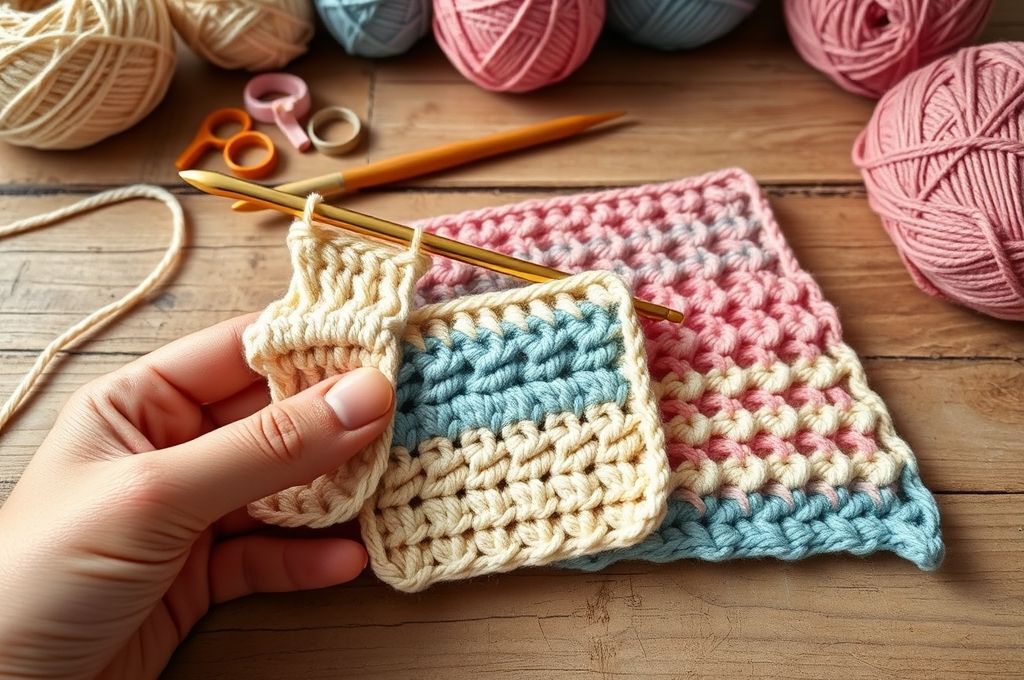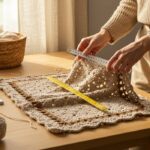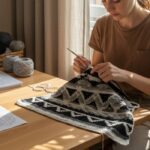Have you ever picked up a crochet hook and yarn, only to feel overwhelmed by the endless knots, loops, and instructions? You’re not alone. Millions of beginners have stood exactly where you are—curious, eager, but unsure where to begin. The truth is, crochet doesn’t have to be complicated. In fact, with just three fundamental stitches—the single crochet, double crochet, and half double crochet—you can create stunning projects that range from cozy scarves to intricate blankets. These stitches are the building blocks of nearly every crochet pattern, and once you master them, you’ll unlock a world of creative possibilities.
In this article, we’ll walk you through each of these essential stitches in a clear, friendly, and practical way. Whether you’re a complete beginner or someone who’s dabbled in crochet but never quite “got it,” this guide will give you the confidence and skills to move forward. We’ll cover everything from how to hold your hook and yarn, to step-by-step instructions for each stitch, common mistakes to avoid, and real-life project ideas that put your new skills to use. Along the way, you’ll discover how crochet isn’t just a craft—it’s a form of mindfulness, creativity, and self-expression.
So grab your favorite yarn, find a comfortable seat, and let’s dive into the beautiful world of basic crochet stitches. By the end of this journey, you won’t just know how to crochet—you’ll love it.
Why Start with These Three Stitches?
Before we jump into the how-tos, let’s talk about the why. Why focus on the single, double, and half double crochet? The answer is simple: versatility, accessibility, and foundation.
These three stitches are the most commonly used in modern crochet patterns. They appear in everything from baby booties to market bags, amigurumi toys to afghans. More importantly, they each serve a unique purpose in terms of texture, height, and density, allowing you to create different effects with the same yarn and hook.
- Single crochet (sc) creates a tight, sturdy fabric—perfect for items that need structure, like hats or baskets.
- Double crochet (dc) is taller and looser, producing a soft, drapey material ideal for shawls, blankets, and garments.
- Half double crochet (hdc) sits right in the middle—offering a balance of speed, warmth, and flexibility.
Think of them like the primary colors of painting: you can mix and match them to create countless patterns and textures. Once you’re comfortable with these basics, you’ll find that more advanced stitches—like treble crochet or shells—are just variations built on the same principles.
And the best part? You don’t need fancy tools or years of practice. With just a hook, some yarn, and a little patience, you can start today. In fact, many people learn all three stitches in a single afternoon.
So, let’s get started with the most foundational of them all: the single crochet.
The Single Crochet: Your First Step in Crochet
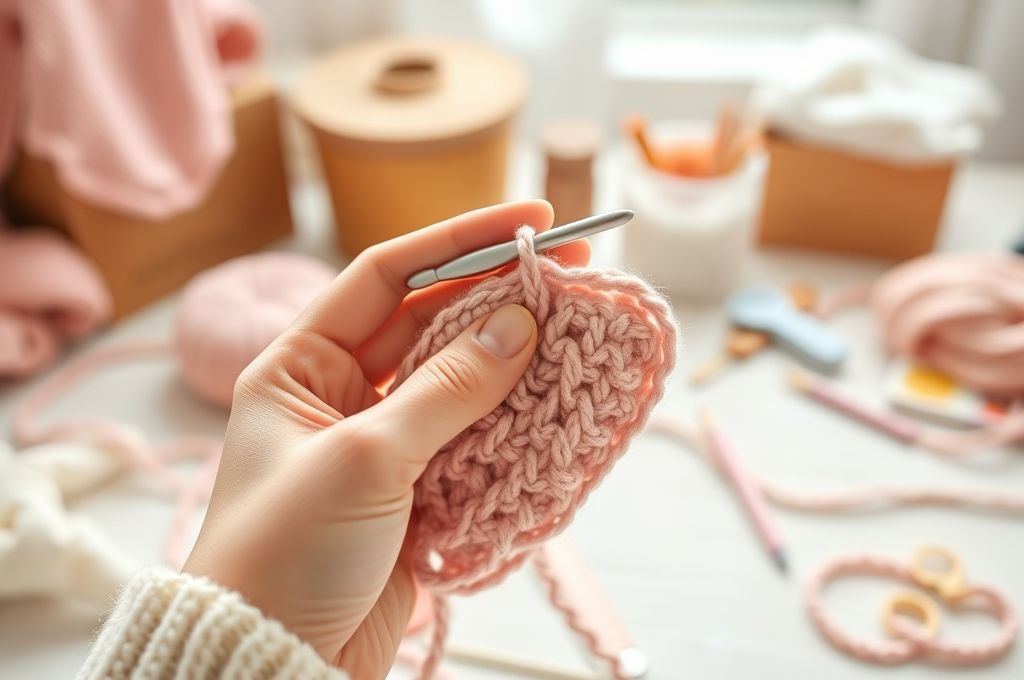
If crochet were a language, the single crochet would be the alphabet. It’s the simplest stitch, yet it’s powerful in its consistency and strength. This stitch is often the first one taught to beginners—and for good reason.
To begin, you’ll need a crochet hook (size H/5mm is great for beginners) and a medium-weight yarn (like worsted weight). Start with a slip knot on your hook, then chain a few stitches—say, 15—to create your foundation row.
Now, for the single crochet:
- Insert your hook into the second chain from the hook.
- Yarn over (wrap the yarn over your hook from back to front).
- Pull the yarn through the chain (you’ll now have two loops on your hook).
- Yarn over again and pull through both loops.
That’s it! You’ve just completed a single crochet. Repeat this across the row, and when you reach the end, chain one and turn your work. Continue practicing for a few rows until the motion feels natural.
Pro Tip: Keep your tension relaxed. Many beginners pull the yarn too tightly, which makes the fabric stiff and hard to work with. Think of your hands as gentle guides, not clamps.
The single crochet is perfect for projects that need durability. Want to make a cute coaster? A phone case? A simple beanie? This stitch has your back. It’s also the go-to for amigurumi (crocheted stuffed toys), where tight stitches prevent stuffing from poking through.
And don’t underestimate the therapeutic value. The repetitive motion of single crochet can be incredibly calming—some crocheters even call it “yarn meditation.” In fact, studies have shown that rhythmic crafts like crochet can reduce stress and improve focus.
So as you practice, remember: every stitch is progress. Even if your first row looks uneven, you’re building muscle memory. And soon, this simple stitch will become second nature.
The Double Crochet: Speed, Drape, and Style
Now that you’ve mastered the single crochet, let’s turn up the volume with the double crochet (dc). This stitch is taller, faster to work, and gives your fabric a lovely open, airy feel. If single crochet is a cozy sweater, double crochet is a breezy summer top.
Here’s how to do it:
- Yarn over first (this is the key difference!).
- Insert your hook into the third chain from the hook (since dc is taller, you skip more chains).
- Yarn over and pull up a loop (you’ll now have three loops on your hook).
- Yarn over and pull through two loops (twice in a row).
You’ve just made a double crochet! Continue across the row, chain two at the end (to lift for the next row), turn, and repeat.
One of the biggest advantages of the double crochet is speed. Because each stitch is taller, you cover more ground with fewer rows. A blanket that might take 100 rows in single crochet could be done in 60 with double crochet—saving you time and effort.
It’s also ideal for drape. If you’ve ever admired a flowy cardigan or a lacy shawl, chances are it was made with double crochet or a variation of it. The slight gaps between stitches allow the fabric to move and breathe, making it perfect for wearable items.
Try this: Make a small swatch using double crochet. Notice how it feels lighter and softer than your single crochet sample. Now, drape it over your hand. See how it falls? That’s the magic of this stitch.
And here’s a fun idea: striped dishcloths. Use cotton yarn in two or three colors and alternate every few rows. Not only are they practical, but they also showcase the stitch beautifully. Plus, they make great gifts!
As you work, pay attention to your gauge—how tightly or loosely you crochet. If your fabric curls, it might be too tight. If it’s floppy, you might be too loose. Adjust your grip and let your hands find a rhythm.
Remember, the double crochet isn’t just about speed—it’s about style. It opens the door to lace patterns, shell stitches, and textured designs that bring your projects to life.
The Half Double Crochet: The Perfect Middle Ground
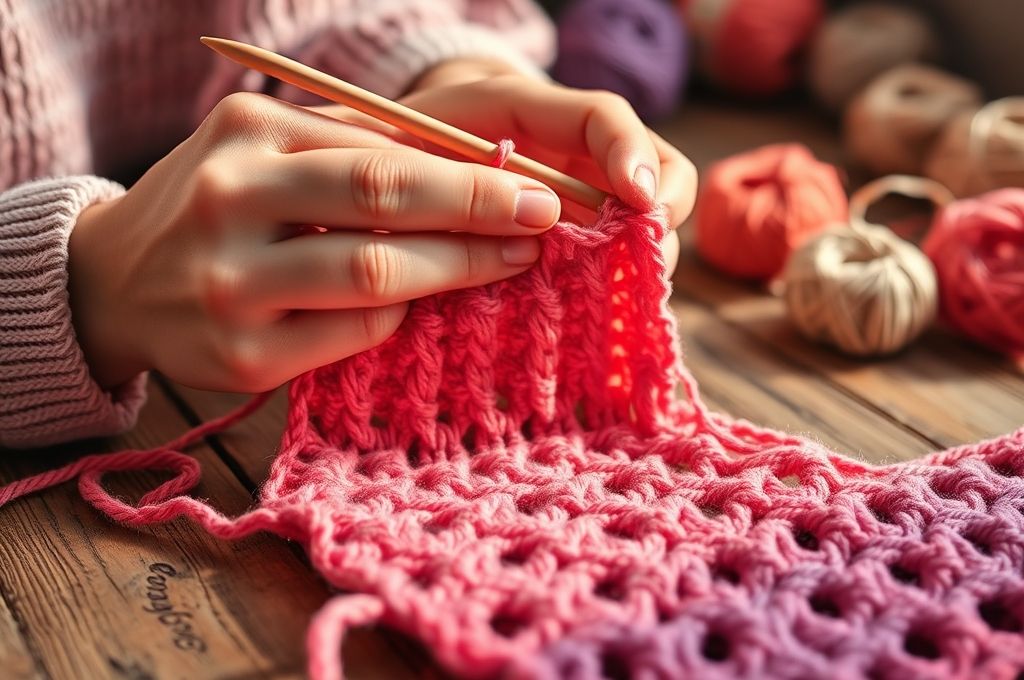
Now, let’s talk about the unsung hero of the crochet world: the half double crochet (hdc). Often overlooked, this stitch is a game-changer for crafters who want the best of both worlds—the density of single crochet and the speed of double crochet.
Here’s how to do it:
- Yarn over (like dc).
- Insert your hook into the second chain from the hook.
- Yarn over and pull up a loop (you’ll have three loops on your hook).
- Yarn over and pull through all three loops at once.
Yes, that last step is the secret! Unlike single or double crochet, hdc finishes with one final pull-through all three loops. It’s a small difference, but it gives the stitch its unique look—a slight twist at the top and a solid, warm fabric.
Why choose hdc? Let us count the ways:
- Faster than single crochet, but denser than double crochet.
- Great for warmth—perfect for winter hats, scarves, and blankets.
- Creates a neat, uniform texture that’s ideal for solid-color projects.
- Works well in rounds, making it a favorite for beanies and coasters.
Try this experiment: Make three small swatches—one in each stitch—using the same yarn and hook. Compare them side by side. You’ll notice that the hdc swatch feels substantial without being stiff, and it works up quicker than the sc version.
Many crocheters use hdc for everyday wearables. A simple hdc beanie, for example, can be finished in under two hours and looks polished and professional. Add a fun pom-pom, and you’ve got a stylish accessory.
Another great use? Baby blankets. Parents love soft, breathable fabrics that aren’t too heavy. Hdc delivers just that—cozy without being bulky.
And don’t forget colorwork. Because hdc has a flat top, it’s excellent for stripes and simple patterns. You can easily switch colors every few rows to create bold geometric designs.
So while it may not get as much attention as its taller or tighter cousins, the half double crochet is a true workhorse. Once you try it, you’ll wonder why you didn’t start sooner.
Common Mistakes (And How to Fix Them)
Even the most experienced crocheters make mistakes—especially when learning. The good news? Most crochet errors are easy to fix once you know what to look for.
Let’s go over the most common issues with these three basic stitches:
1. Uneven Edges
If your rows slant or your edges look jagged, you might be missing or adding stitches. Always count your stitches at the end of each row. Also, make sure you’re inserting your hook into the correct spot—usually the top two loops of each stitch.
2. Curling Fabric
Tight tension is the usual culprit. If your swatch curls inward, try loosening your grip on the yarn. If it curls outward, you might be skipping the first stitch or not chaining enough at the beginning of the row.
3. Gaps at the Start of Rows
This often happens with double and half double crochet. To fix it, make sure your turning chain counts as a stitch (or doesn’t, depending on the pattern). For dc, chain 2 or 3 and place your first stitch in the next stitch—not in the same one as the chain.
4. Inconsistent Height
Mixing up stitch types by accident? It happens! Double-check each stitch as you go. Remember: sc has no yarn over at the start, dc has one, and hdc has one—but finishes with a three-loop pull.
5. Knots and Tangles
Keep your yarn in a bowl or bag to prevent rolling. If you’re using a ball, let it roll from the center to reduce twisting.
And here’s a golden rule: don’t fear the frog. “Frogging” (rip it, rip it) means undoing your work. It’s not failure—it’s part of the process. Even experts frog their projects to fix mistakes or change designs.
The key is patience. Crochet is not a race. Each mistake teaches you something. Over time, your hands will learn the rhythm, and your stitches will become more consistent.
Creative Projects to Try with Basic Stitches
Now that you’ve got the stitches down, let’s put them to work! Here are five beginner-friendly projects that use only single, double, and half double crochet:
1. The Classic Scarf (HDC)
Chain 20, work in hdc for 60 rows. Add fringe if you like. Simple, warm, and customizable.
2. Coasters (SC)
Chain 12, work in sc for 12 rows. Make a set of four in different colors. Practical and pretty.
3. Market Tote (DC)
Make two rectangles (20×30 inches) in dc, sew the sides, and add sturdy straps. Eco-friendly and stylish.
4. Newborn Hat (HDC in the round)
Start with a magic ring, increase in rounds, then work even rows. Finish with a pom-pom. Adorable and heartfelt.
5. Striped Blanket (Alternating DC and SC rows)
Use two colors and alternate 5 rows of dc with 2 rows of sc for texture. A weekend project with big impact.
These aren’t just crafts—they’re confidence builders. Each finished piece reminds you: I made this. And that sense of accomplishment is priceless.
Plus, handmade gifts carry love in every stitch. Imagine giving a friend a scarf you made, knowing it’ll keep them warm all winter. That’s the power of crochet.
The Joy of Repetition: Crochet as Mindfulness
Beyond the stitches and projects, there’s something deeper at play: the joy of repetition. In a world that’s constantly moving—emails, notifications, endless scrolling—crochet offers a rare moment of stillness.
The rhythmic motion of yarn and hook can be meditative. Studies have shown that repetitive handcrafts activate the parasympathetic nervous system, helping reduce anxiety and improve mood. Many people report entering a “flow state” while crocheting—where time fades, and focus sharpens.
Think of it as active mindfulness. You’re not just sitting still; you’re creating. And that creation becomes a form of self-care.
Whether you’re working on a complex blanket or just practicing a few rows, take a moment to notice:
- The softness of the yarn
- The gentle click of the hook
- The growing fabric under your fingers
These small sensations ground you in the present. No past regrets, no future worries—just this stitch, this moment.
And if your mind wanders? That’s okay. Gently bring it back, like you would in meditation. With every return, you’re training your focus and calming your thoughts.
So the next time you feel stressed or overwhelmed, consider picking up your hook. You might be surprised at how quickly a few rows can shift your mood.
From Beginner to Confident Crafter
You started with a hook and a question: Can I really learn to crochet? Now, after mastering three foundational stitches, exploring projects, and understanding common pitfalls, the answer is clear: yes, you can.
And more than that—you are a crocheter. It doesn’t matter if your first swatch isn’t perfect. What matters is that you showed up, you tried, and you kept going.
Every expert was once a beginner. Every beautiful afghan started with a single chain. And every stitch you make is a step forward.
As you continue, you’ll discover new patterns, experiment with colors, and maybe even design your own projects. But no matter how advanced you get, you’ll always come back to these basics. They’re your foundation, your safety net, your creative launchpad.
So don’t rush to the next stitch or the next pattern. Savor this stage. Play with your yarn. Make mistakes. Laugh at tangled threads. And most of all, enjoy the process.
Because crochet isn’t just about what you make—it’s about who you become while making it.
Conclusion: Your Crochet Journey Begins Now
We’ve covered a lot in this guide: the single crochet for strength, the double crochet for speed and drape, and the half double crochet for balance and warmth. You’ve learned how to execute each stitch, avoid common mistakes, and apply them to real projects. More importantly, you’ve seen how crochet can be more than a hobby—it can be a source of joy, mindfulness, and personal growth.
Now, it’s your turn. Pick up your hook. Choose a color you love. Start with a chain, then a single stitch. Then another. Before you know it, you’ll have a row, a swatch, maybe even a finished project.
Don’t wait for the “perfect time.” There’s no such thing. The best time to start is now.
And when you do, we’d love to hear from you! Share a photo of your first stitch, tell us about your favorite yarn, or ask a question in the comments. This isn’t just an article—it’s the beginning of a community.
So go ahead. Make that first stitch. Your crochet journey starts today.
Happy crocheting! 🪝🧶

Daniele Ferreira is passionate about the world of crochet, dedicating her time to exploring techniques, creating unique pieces, and sharing her knowledge with beginners and aficionados alike. With attention to detail and creativity, she transforms yarn into true works of art, inspiring others to discover the beauty and joy of this manual art.

